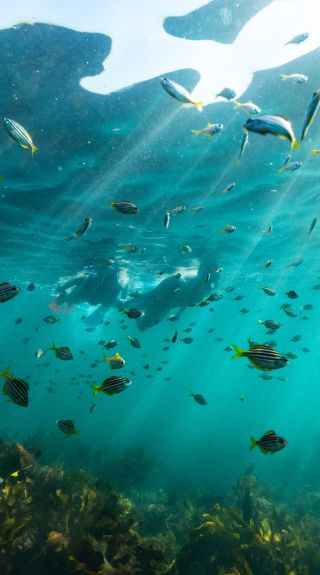
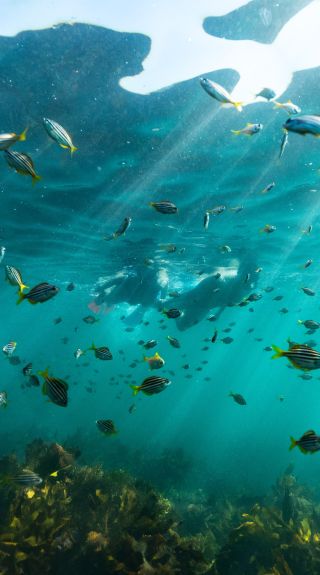
A guide to all the sea creatures you’ll see at the best snorkelling spots in Sydney
Snorkelling at Shelly Beach, Manly
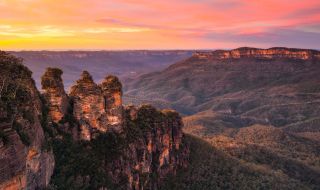
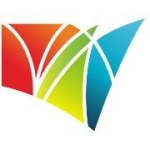
Destination NSW
Shelly Beach is located in sheltered Cabbage Tree Bay in Manly on Sydney’s Northern Beaches. The bay, an aquatic reserve, is teeming with life and surprisingly biodiverse, much to the delight of the swimmers, snorkelers and divers who frequent it every day.
From the beach, swim to the right, hugging the rocky coastline towards the tip of the reef and watch out for Eastern blue gropers, giant cuttlefish, wobbegongs and Port Jackson sharks. If the water’s clear, search the sea floor for the ‘wreck’ of an old motorbike near the end of the reef.
Snorkelling the left-hand shoreline of Shelly Beach can be more interesting, especially in the shallows where you pass over fields of cray weed and sea grass swaying in the tidal flow, and likely encounter giant cuttlefish, squid, large schools of juvenile fish and several species of ray on the sand. In the warmer months, look out for juvenile dusky whaler sharks. Turtles and dolphins are also seen frequently.
Tip: Join the experts from Ecotreasures for a guided snorkelling tour. As a certified eco-tourism operator, they will show you the magic of the ocean while also teaching you about biodiversity and the area's rich cultural heritage. The tours are suitable for beginners (with a pool noodle to help you float) and exciting enough for experienced snorkellers.
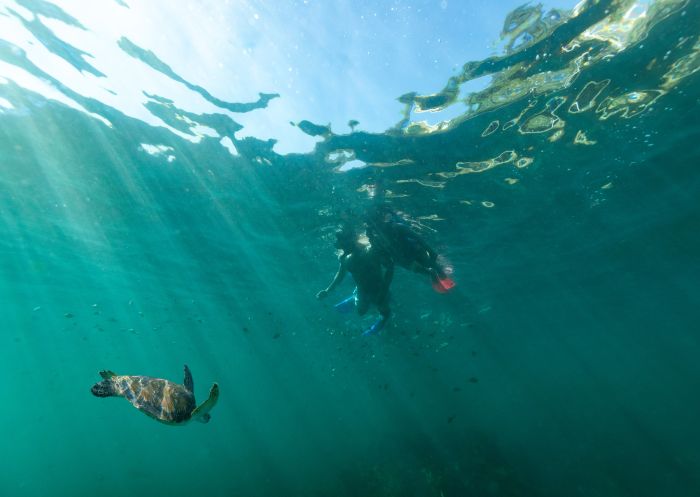
Snorkelling at Shelly Beach, Manly
Palm Beach is the northernmost of Sydney’s Northern Beaches, with a striking headland at the end of a narrow peninsula, separating the calm waters of Pittwater on the west, and a surf beach on the east. The best snorkelling is at the southern, sheltered end of the surf beach, with an easy entry point near the rockpool.
Swim through the shallows over fields of sea grass and kelp, explore the nooks and crannies of the rock formations for cuttlefish and octopus, and on the sandy sea floor, you’ll likely encounter several smooth stingrays.
On the Pittwater side, take a ferry from Palm Beach to The Basin, a remote little protected bay in Ku-ring-gai Chase National Park. The star attraction is sea horses, but you'll also cross paths with starfish, cuttlefish, bream, leather jackets and, during the warmer months, tropical species.
Tip: Options are limited in Palm Beach, so pick up your gear in Manly as you are driving north. Dive Centre Manly has snorkels, masks and fins for hire, and the team is always happy to share tips.
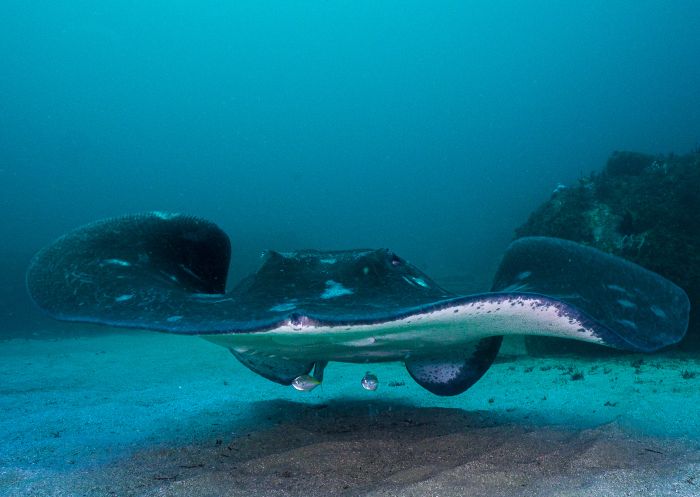
Smooth stingray at Palm Beach - Credit: Pete McGee
Clifton Gardens Recreational Park is the access point for snorkelers and divers keen to explore the underwater world of Chowder Bay. This small, protected bay is located on the harbour foreshore in Mosman, on Sydney’s lower North Shore. The jetty and swimming enclosure here provide habitat for a number of critters, most notably White’s (Sydney) seahorses and decorator crabs, but there are also several species of leatherjackets, nudibranchs, squid and cuttlefish.
The seahorses can be found on the nets around the swimming enclosure, and the local population of this endangered species was boosted in 2020 by 90 aquarium-bred juveniles and the installation of ‘Seahorse Hotels’, wire cages that provide a sheltered habitat, to prop up the population of this endangered species.
Look out also for well-known moray eel couple, nick-named Murray and Ellie by local scuba divers, who co-habit a hole in one of the jetty’s pylons.
Tip: The Land’s Edge Foundation is a not-for-profit organisation that connects young people with the environment. Book the kids in for a day camp at Saltwater School, where they'll be guided through the underwater world, or hire snorkelling gear to explore yourself – all the money goes back into the education programs.

White's seahorse at Chowder Bay, Mosman - Credit: Jayne Jenkins
Located in Sydney’s Eastern Suburbs just south of Bondi, Clovelly is a great site for snorkellers of all ages as it's safe and protected in most conditions, with easy entry and exit from the concrete steps near the surf club.
Swim out over beds of seaweed and the fringing reef and look closely for octopuses, cuttlefish and moray eels hiding under rocky overhangs. Clovelly is inside the Bronte-Coogee Aquatic Reserve, so you’ll encounter lots of schooling fish and likely be joined for your snorkel by at least one friendly Eastern blue groper.
Tip: Post snorkel, make a beeline to Out of the Blue for a fish burger that has cult status among locals.
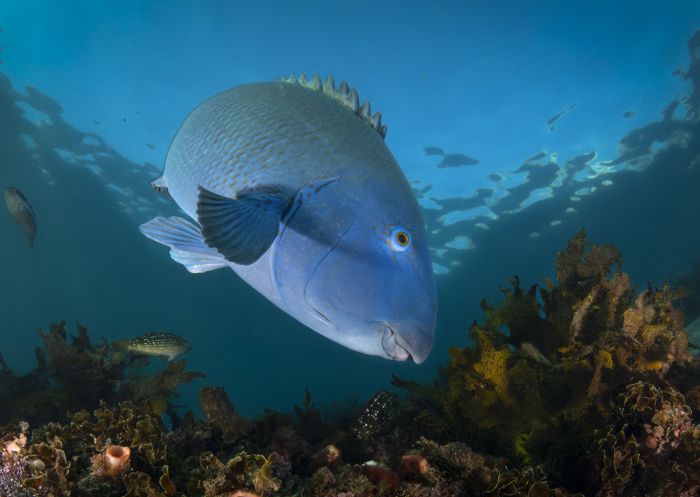
Eastern blue groper, Clovelly - Credit Talia Greis
Hidden between Clovelly and Coogee beaches, in Sydney’s Eastern Suburbs, Gordons Bay is the only snorkelling destination in Sydney with a dedicated underwater nature trail. The underwater trail is marked by a series of sunken drums, linked by chains, each of which gives you information about local marine life, from starfish, sponges, urchins and anemones to cuttlefish, spotted goatfish and garfish, wobbegongs and Port Jackson sharks.
Tip: Dive Bondi offers guided one-hour snorkel tours at Gordons Bay (or Clovelly, Little Bay and Malabar Beach depending on the conditions). If you’re not a confident swimmer, they will provide a flotation device for you to hold onto while pointing out local marine species. And if you can't bear to get out of the water at the end of the tour, you can keep your gear until the end of the day for no extra cost.
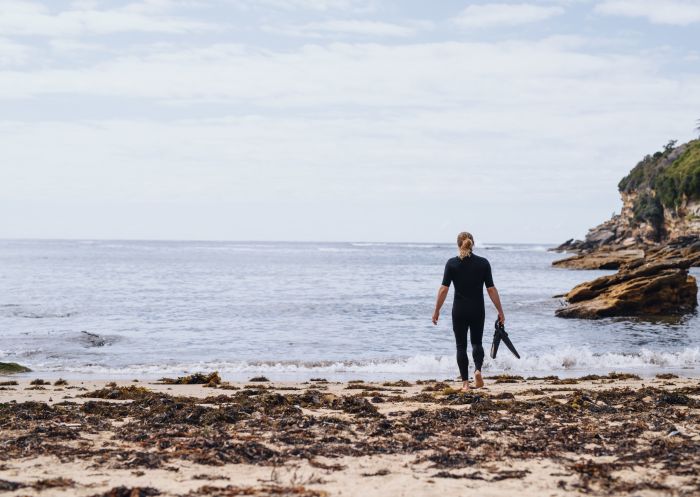
Gordons Bay, Coogee
Off the northern headland of Kamay Botany Bay National Park lies Bare Island, one of Sydney’s most popular scuba diving sites and it is equally enjoyable on snorkel. A footbridge connects the island to the mainland, with steps leading down to an easy entry point on a flat rock platform.
On the western side of the island, you’ll find vibrant sponge gardens teeming with life, including seahorses, pipefish, nudibranchs, Red Indian fish and flying gurnards, while the eastern coast is hugged by a rocky reef.
Tip: The history of the island itself is fascinating – it is well worth coming back for the Bare Island and Cape Banks ultimate day tour to delve into the many layers of this area’s rich history.
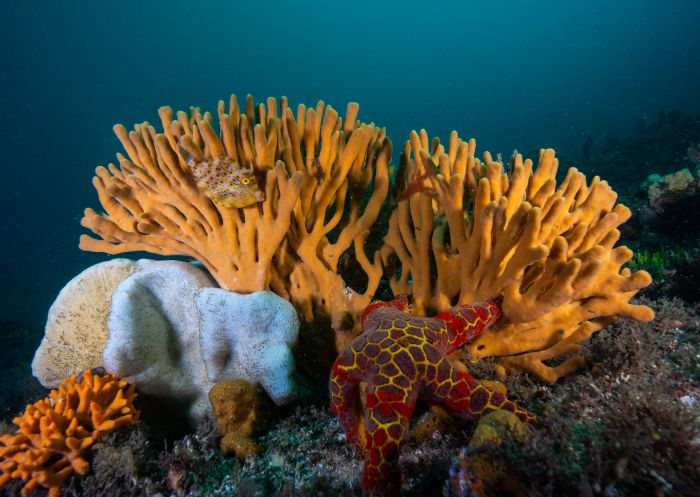
Sponge garden sea star and leatherjacket, Bare Island - Credit: Pete McGee
A sheltered beach and rockpool in Cronulla, Oak Park is a great spot for snorkelers and divers of all levels. Enter on the right-hand side of the pool and snorkel along the arc-shaped wall where you’ll find overhangs and crevices to explore and vibrant bunches of sea tulips and other sponges. Look out for large schools of fish, the occasional ray, Eastern blue gropers, old wives, cuttlefish and crayfish.
Tip: Hire snorkel gear from Abyss Scuba Diving, a short drive away in Ramsgate. They also offer scuba diving courses if you’re ready to go deeper.
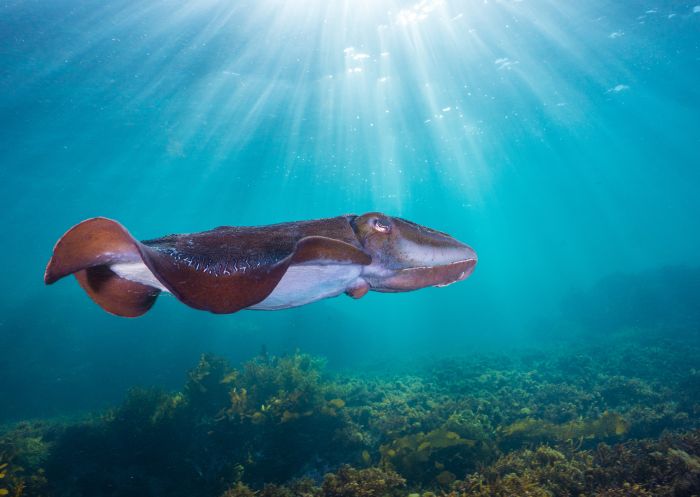
Giant cuttlefish in shallows in Oak Park - Credit: Pete McGee
Wattamolla Beach is at the southern tip of Sydney in the Royal National Park, a very photogenic spot complete with beach, lagoon and waterfall. The lagoon is great for beginner snorkelers, while more experienced snorkelers can venture out from the beach in search of rays, Port Jackson sharks, cuttlefish and wobbegongs, while the whole fringing reef is covered in colourful sponges, sea squirts and gorgonian fans.
Tip: This is a great option for kids, who can practice using the snorkel in the lagoon without being interrupted by waves. While you’re there, make your way to the nearby dam for a dip in the lush rockpools.
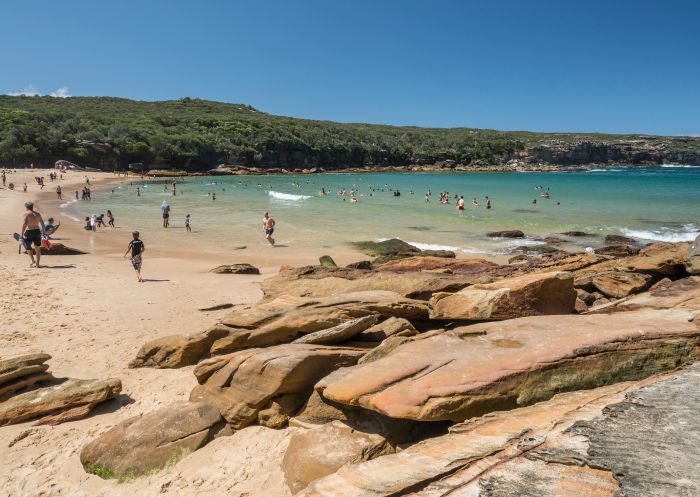
Wattamolla Beach, Royal National Park - Credit: Dee Kramer Photography
Head underwater and discover the incredible marine life that lives along Sydney's shores. You'll be amazed at the diverse and colourful snorkelling spots below the surface, from the wobbegongs and giant cuttlefish of Shelly Beach to the tiny seahorses and decorator crabs of Chowder Bay.
Stay connected to Sydney for all the latest news, stories, upcoming events and travel inspiration.
All the insider news, tips and inspiration you need to plan your next trip, delivered straight to your inbox.
Sign UpSydney.com is the official tourism site for Destination NSW.
© Copyright 2025 Destination NSW. All rights reserved